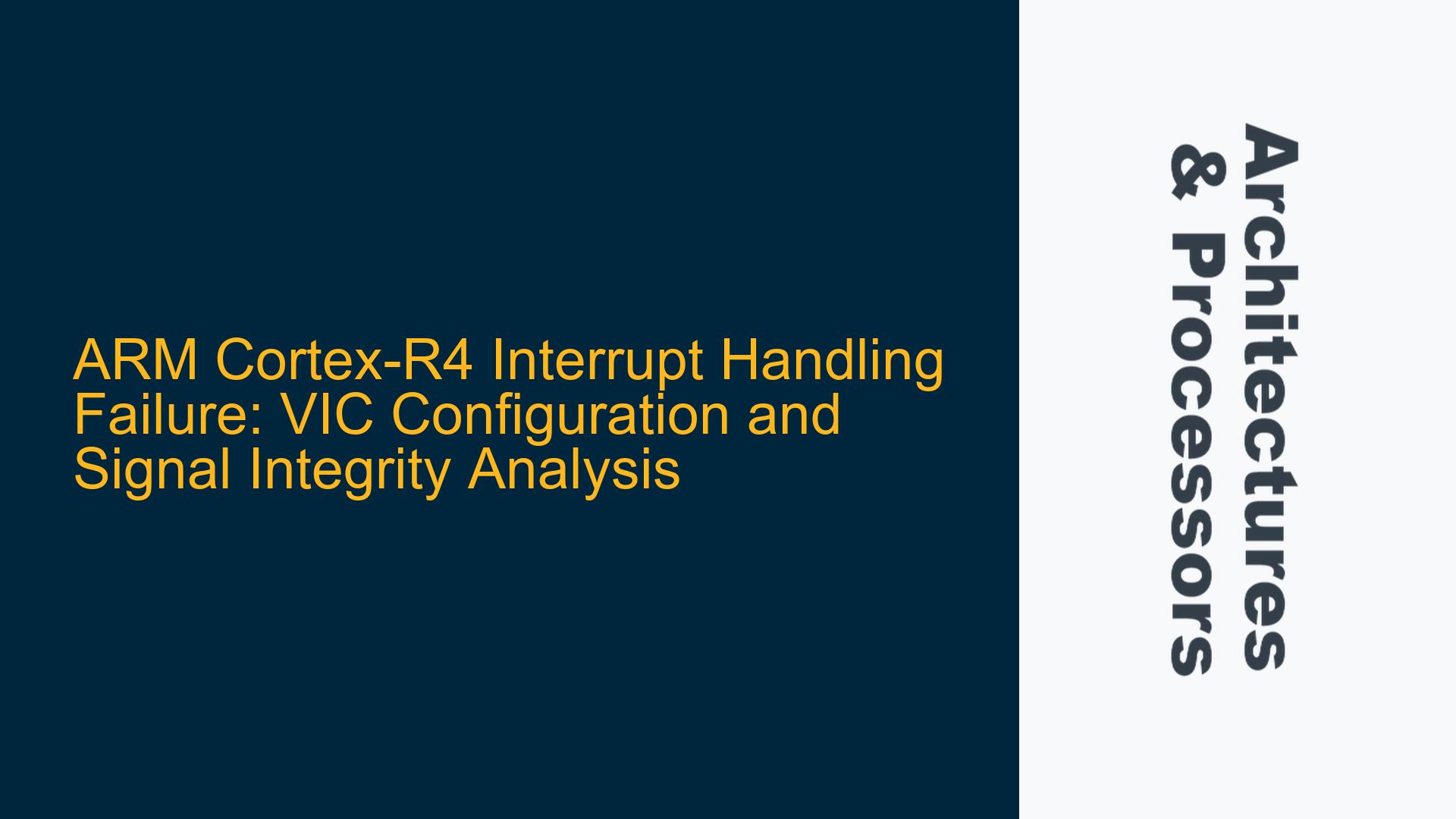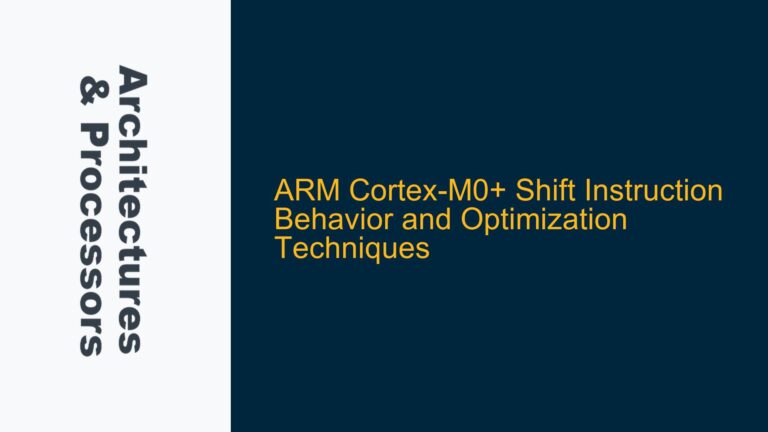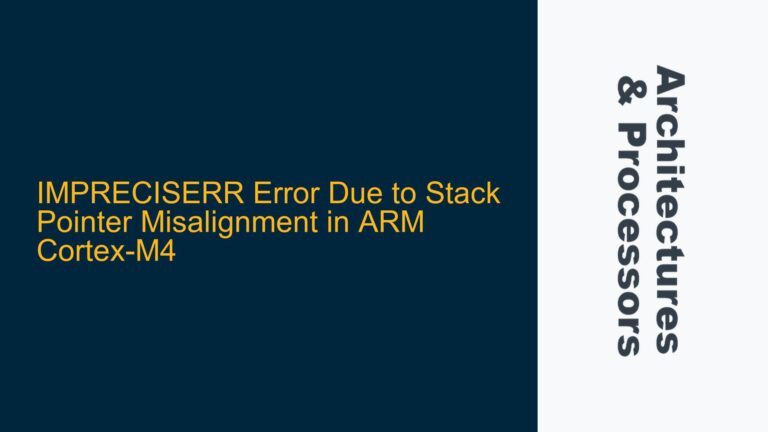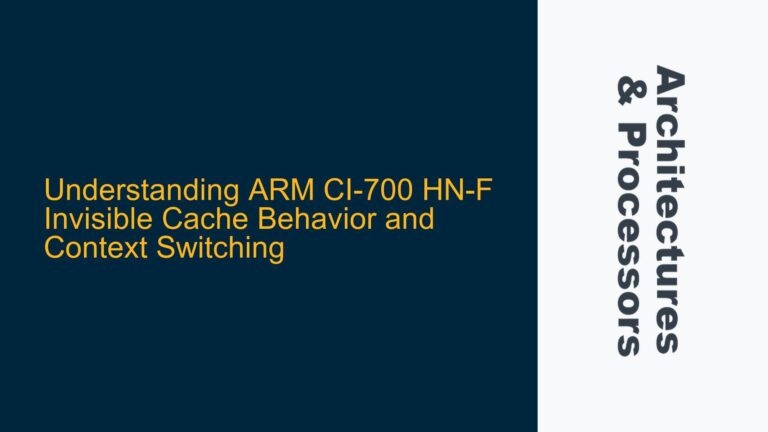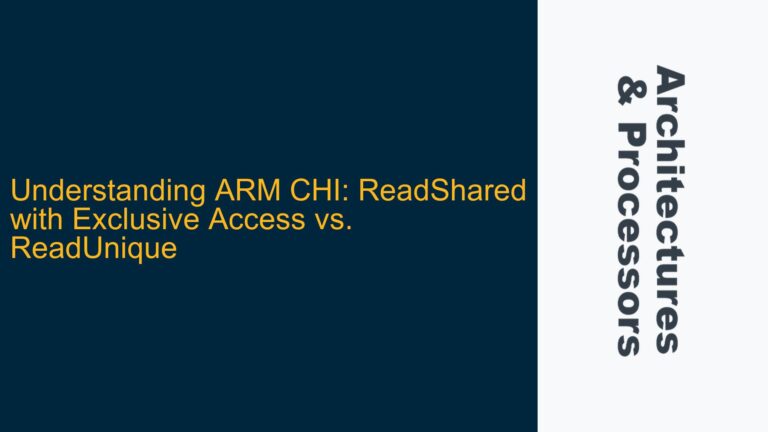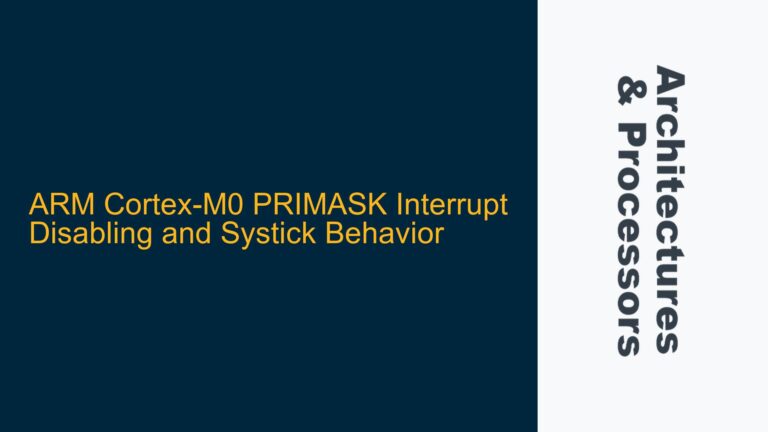ARM Cortex-R4 Interrupt Handling Failure with VIC and ICUA Integration
The ARM Cortex-R4 is a high-performance processor designed for real-time applications, often integrated with complex interrupt controllers like the Vector Interrupt Controller (VIC) and ICUA (Interrupt Control Unit A) in systems such as Renesas Electronics’ RZ/T1. In this scenario, the Cortex-R4 fails to handle interrupts despite the interrupt controller (VIC) appearing to be correctly configured. The VIC is responsible for managing interrupt sources and notifying the Cortex-R4 via a 1-bit interrupt signal and a 32-bit Vector Address Data (VAD) signal. The VAD signal carries the address of the interrupt service routine (ISR) to which the processor should branch when an interrupt occurs.
The issue manifests as the Cortex-R4 not branching to the ISR even though the VIC is correctly configured, the VAD register contains the correct ISR address, and the interrupt signal is not masked in the Current Program Status Register (CPSR). This suggests a potential misconfiguration or hardware-software interaction issue that prevents the Cortex-R4 from recognizing or responding to the interrupt signal.
VIC-Cortex-R4 Signal Integrity and CPSR Configuration
The Vector Interrupt Controller (VIC) and Cortex-R4 communicate via two primary signals: a 1-bit interrupt notification signal and a 32-bit VAD signal. The VIC acts as the master for both signals, asserting the interrupt notification signal and providing the corresponding VAD when an interrupt occurs. The Cortex-R4 relies on these signals to branch to the correct ISR. However, several factors could disrupt this communication:
- Signal Integrity Issues: The physical connection between the VIC and Cortex-R4 might be compromised, leading to signal degradation or loss. This could result from poor PCB layout, incorrect pin configuration, or electrical noise.
- CPSR Configuration: The Current Program Status Register (CPSR) controls the processor’s operating mode and interrupt masking. The IRQ mask bit (bit 7) in the CPSR must be cleared to enable IRQ interrupts. In this case, the CPSR value is 0x80000173, indicating that the IRQ mask bit is correctly set to 0 (not masked). However, other CPSR bits or system-level configurations might inadvertently disable interrupts.
- VIC Configuration: While the VAD register contains the correct ISR address, other VIC settings, such as priority levels, interrupt enable flags, or edge/level sensitivity, might be misconfigured, preventing the VIC from properly signaling the Cortex-R4.
- Clock Synchronization: The Cortex-R4 and VIC must operate on synchronized clocks. A mismatch in clock domains or timing issues could cause the Cortex-R4 to miss the interrupt signal.
- Power Management: The Cortex-R4 or VIC might be in a low-power state that disables interrupt handling. Power management configurations should be verified to ensure interrupts are not inadvertently suppressed.
Diagnosing Signal Integrity and Implementing Interrupt Handling Fixes
To resolve the Cortex-R4 interrupt handling failure, a systematic approach is required to diagnose signal integrity issues, verify configurations, and implement fixes. Below are detailed troubleshooting steps and solutions:
Step 1: Verify Signal Integrity
- Inspect PCB Layout: Review the PCB layout to ensure proper routing of the 1-bit interrupt notification and 32-bit VAD signals. Check for signal integrity issues such as crosstalk, impedance mismatches, or excessive trace lengths.
- Oscilloscope Analysis: Use an oscilloscope to probe the interrupt notification and VAD signals. Verify that the signals are clean, free from noise, and meet the timing requirements specified in the Cortex-R4 and VIC datasheets.
- Pin Configuration: Confirm that the GPIO pins used for the interrupt notification and VAD signals are correctly configured in the hardware design and firmware.
Step 2: Validate CPSR and System-Level Configurations
- CPSR Bit Analysis: While the IRQ mask bit is correctly cleared, review other CPSR bits to ensure they do not inadvertently disable interrupts. For example, the FIQ mask bit (bit 6) or mode bits (bits 0-4) might affect interrupt handling.
- System Control Register (SCR): Check the SCR for additional interrupt masking or configuration settings that might override the CPSR.
- Exception Handling: Ensure the Cortex-R4’s exception vector table is correctly populated with the addresses of the ISRs. Misconfigured vector tables can prevent the processor from branching to the correct ISR.
Step 3: Verify VIC Configuration
- Interrupt Enable Flags: Confirm that the interrupt enable flags for the relevant interrupt sources are set in the VIC. Disabled interrupts will not trigger the interrupt notification signal.
- Priority Levels: Verify that the interrupt priority levels are correctly configured. Higher-priority interrupts might mask lower-priority ones.
- Edge/Level Sensitivity: Ensure the VIC is configured to detect the correct interrupt trigger type (edge or level). Mismatched sensitivity settings can cause missed interrupts.
- VAD Register: Double-check the VAD register values against the ELF file symbol information to ensure the correct ISR addresses are loaded.
Step 4: Check Clock Synchronization and Timing
- Clock Domains: Verify that the Cortex-R4 and VIC operate on synchronized clock domains. Use clock domain crossing (CDC) techniques if necessary to ensure proper signal synchronization.
- Timing Analysis: Perform timing analysis to ensure the interrupt notification and VAD signals meet setup and hold time requirements relative to the Cortex-R4’s clock.
Step 5: Review Power Management Settings
- Low-Power States: Check if the Cortex-R4 or VIC is in a low-power state that disables interrupt handling. Adjust power management configurations to ensure interrupts are enabled during normal operation.
- Wake-Up Sources: Configure wake-up sources to ensure the Cortex-R4 can respond to interrupts from low-power states.
Step 6: Debugging and Testing
- Breakpoints and Watchpoints: Use debugging tools to set breakpoints and watchpoints on the ISR and VIC registers. Monitor the processor’s behavior when an interrupt occurs.
- Simulation and Emulation: Leverage hardware simulators and emulators to replicate the issue in a controlled environment. This can help isolate the root cause without risking hardware damage.
- Firmware Logging: Add logging statements to the firmware to track the flow of execution and identify where the interrupt handling process breaks down.
Step 7: Implement Fixes
- Signal Conditioning: If signal integrity issues are identified, implement conditioning techniques such as termination resistors, shielding, or re-routing traces.
- Configuration Adjustments: Correct any misconfigurations in the CPSR, VIC, or system-level settings.
- Firmware Updates: Modify the firmware to ensure proper initialization and handling of interrupts. For example, add explicit memory barriers or cache management instructions if necessary.
- Clock and Power Management: Adjust clock and power management settings to ensure proper synchronization and interrupt handling.
By following these steps, the root cause of the Cortex-R4 interrupt handling failure can be identified and resolved. This comprehensive approach ensures that both hardware and software factors are considered, leading to a robust and reliable system implementation.
